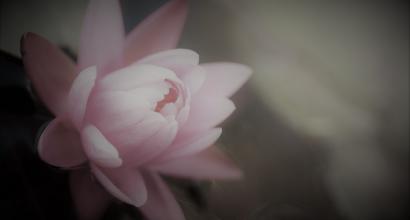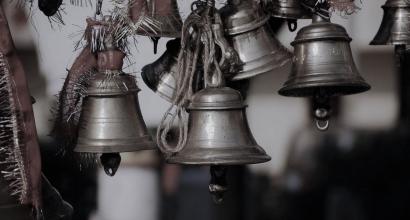Srinivasa Murthy was a born rasika (connoisseur). Being a rasika presupposes a penchant to search for splendour in every aspect of life and to enjoy the splendour present in them. This natural quality in Murthy blossomed in the field of literature on the one hand and on the other, it pervaded his daily life.
Sometime around 1914, when Murthy was studying in Central College, with a view of getting the book ‘Shyamu’ printed, he had visited the press where my newspaper was being published. He was then in his youth; a tall man, reddish-white in complexion, smiling face, wearing a layered dhoti, flamboyant in speech, a thin cane in hand, and a sharp gait. There was a reason for me to specifically observe all this. His father, M R Ramachandra was the Amaldar (Chief Revenue Collector) of our village; and he was a friend of a close elderly relative of mine. Among the strikingly handsome men I have seen, M R Ramachandra was one of the prominent ones. I was curious to know more about Srinivasa Murthy since he was the son of such a person. At that time, I had read the work ‘Shyamu’ and liked its style. The story was most likely written by Murthy (or perhaps by a friend of his, and had been given to him for refinement). I remember that it was the story of girl who suffers at the hands of her step mother; but I’ve forgotten the details.
It appears that Murthy went to Bombay to study Law sometime after completing his B.A. He had penned a few verses about the beautiful scene of the Arabian sea, which he had witnessed there. Several years later, he showed me those verses. They were kanda-padyas and vṛttas written in Haḻagannaḍa (Classical Kannada) in the campū-kāvya style (a genre of Indian literature that has both prose and verse). The subject of those poems was the description of the beauty and pleasures of the Parsi and Gujarati girls who would come to the beach to get fresh air – for young men to observe this was quite natural.
The reason for me to allude to these two short literary works is to show that Murthy’s literary interests were present from his early years. This natural literary enthusiasm took a different form after he began teaching. He devoted his mind to the introduction of good poetry to his students and to enhance their ability for aesthetic experience. He was a teacher of Physics and Chemistry; his study of literature was purely for self joy. When he was in Shivamogga, he gathered together hostel students and encouraged them to participate in kāvya-vācana (poetry recitation) and in the performance of plays; thus he found enjoyment. One of his students of those days, Nittur Srinivasa Rao, shared this with me.
Murthy’s was fun-loving by his very nature and this blossomed in his friends circle. He was enthusiastic in ‘Scout’ (Scouts and Guides) functions. He would team up Boy Scouts, taking them on trips, making them undertake adventurous activities, and preparing snacks for them. Arranging food and snacks for them while having friendly chats with them was something he dearly loved. His play Kanṭhīrava was prepared for his Scout students. But as he was friendly with his students, when it came to a matter of discipline, he offered no latitude and didn’t give way to niceties. For this reason all his students respected him as much as they loved him.
When he was Headmaster of Normal School, then Range Inspector, and later District Inspector, he conducted himself in a friendly and cordial manner with the teachers who worked under him. He has picturised some of these experiences in his book ರಂಗಣ್ಣನ ಕನಸಿನ ದಿನಗಲು (Ranganna’s Dreamy Days). That book is one of the living works of modern Kannada literature. Among the people who’ve raised concerns in recent times about the need to reform our education system, I wonder how many have read this book thoroughly! If they had read this book and comprehended its meaning, the direction of their work would have been different.
Even in family life, he was kind-hearted. He affectionately nurtured a large family. Towards his younger brothers and sisters and their families, he remained deeply affectionate, giving refuge to those who were helpless. He managed the household selflessly, finding joy in his family’s happiness. Compassion towards the struggles and hardships of relatives, joyful entertainment of the guests, friendly and fun-filled conversations during the gathering of women and children – this was his family life.
It appears unnecessary to write about his literary capability, for his works are well-known to everyone. He has provided us with compositions in various literary genres such as stories, poems, plays, and historical research that will remain eternal. He had such talent and energy that his day would look like this: writing a couple of poems in the morning, efficiently handling schoolwork or household work until lunchtime, ‘energetically’ (in his typical style of choosing words) teach in the afternoon, deliver an extensive discourse in the evening, and write a story or an act of a play before going to bed. Whatever he wrote was full of rasa and pregnant with meaning.
I am unaware of any Kannada orator who is better than Murthy. In the view of cultured people, the requisite quality in a discourse is not mere eloquence. The words should be rich in content. Apart from maintaining respect towards the subject matter and using radiant words, one must ensure that the discourse has an appropriate structure. And to support them both, one needs a sonorous voice. If a discourse has to create a powerful impact on the listeners, several qualities like this have to come together. Among the greatest Kannada orators in the eyes of cultured people, the two I know are Venkannayya and Srinivasa Murthy. In Venkannayya, seriousness of subject and vigour of style were the prominent characteristics. In Murthy, along with these characteristics, there was also light-hearted humour. A few years ago, during the millennial celebrations of the poet Ranna in the Sahitya Parishad, the lecture that Murthy delivered is etched forever in my memory. On that day, the audience had a lot of women and Murthy’s family was also among them. Speaking about Ranna’s Gadhāyuddha, Murthy took up the topic of Draupadi and frequently turned towards the womenfolk in the audience; he said, “Women provoke their men to perform actions that they desire, and to do so, they employ several tactics. In order to kindle Bhīma, Draupadi taunts him. Just listen to her words! If one wants to use sarcasm to awaken a nonchalant husband, then she must carefully notice Draupadi’s lines that I’ve just recited.” In this manner, he explained with illustrations the verses, thus clarifying their meaning and grabbing our complete attention. There was none who did not laugh or enjoy this part of the discourse. Afterwards, I said, “Murthy, it was awesome!” He responded, “Yes sir, there was inspiration sitting right in front of me! When such a beautiful object is in front of you, how can the lecture not turn out to be awesome?” Murthy was unmatched in such light-hearted and playful conversations.
So was Murthy’s style of rendering the Vacanas of the Śivaśaraṇas. The manner in which he rendered poems, prose, or vacanas, the meaning was instantly revealed to the listeners. He had learnt thousands of vacanas by heart. He had not only read all the published (thus far) poetical works of Haḻagannaḍa (Classical Kannada) from cover to cover, but also had memorized them. Along with those voluminous works he had also read several unpublished manuscripts available on palm leaves. He had a sharp aesthetic vision (even) during kāvya-vyākhyāna (giving a commentary on a poem). He was free from jealousy and appreciated the good qualities of others. To search for the essence in every work he read was his primary undertaking.
Murthy was a supremely sattvic person, a firm believer in inner purity, and a worshipper of his parents. He was humble towards elders, a conformist in matters of principle, professional in worldly affairs, and overall dispassionate. Among those who know him there were none who were not heartbroken by his demise. By his death, not only the literary world but also the world of good-natured people has become so much poorer.
This is an English translation of the tenth chapter of D V Gundappa’s Jnapakachitrashaale – Vol. 1 – Sahiti Sajjana Sarvajanikaru. DVG wrote this series in the early 1950s. Edited by Hari Ravikumar.











































